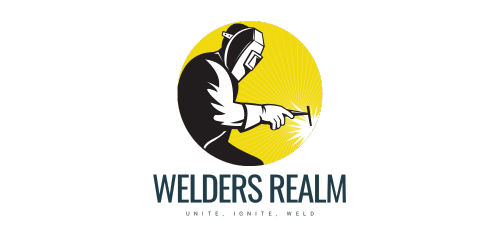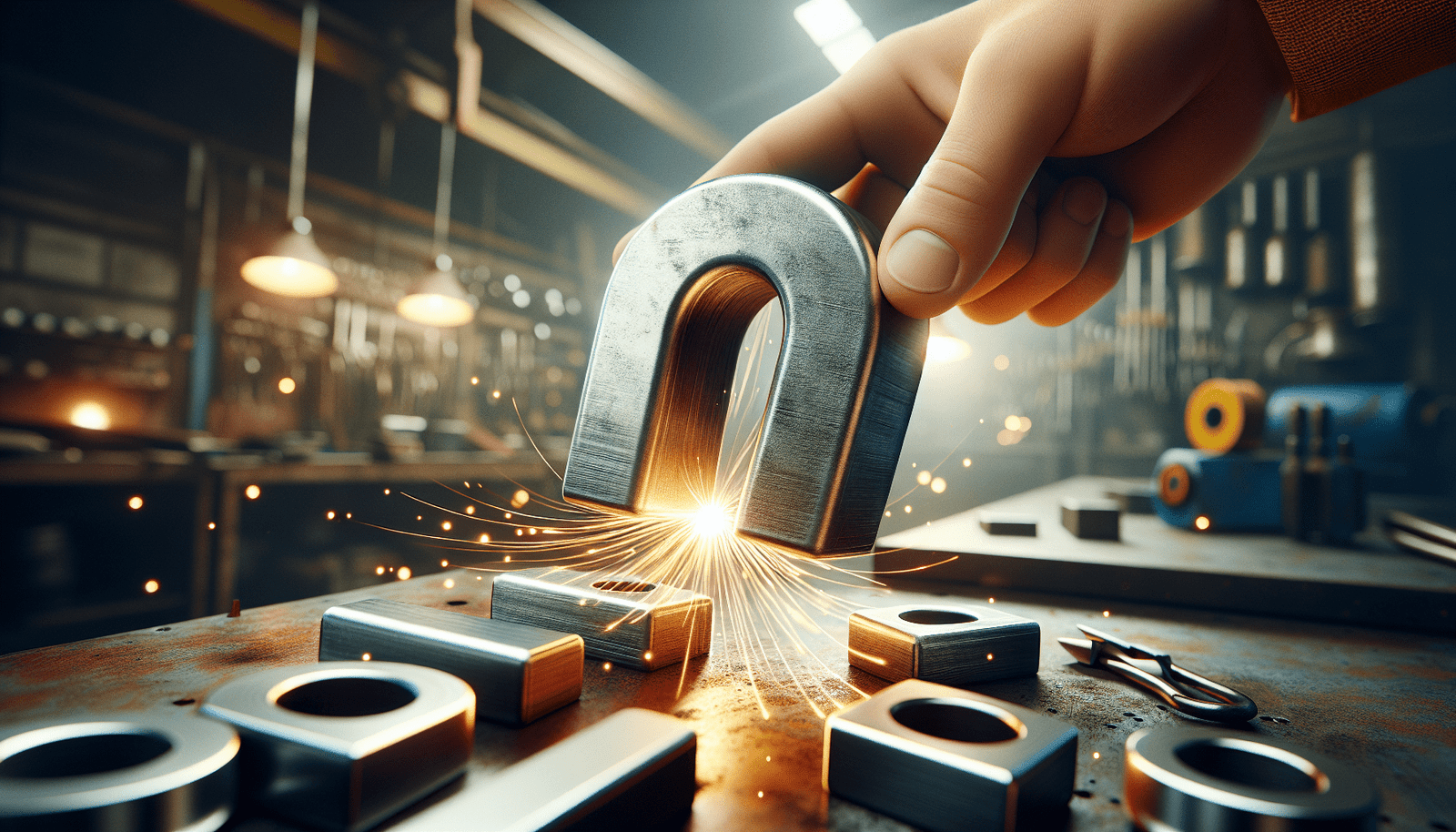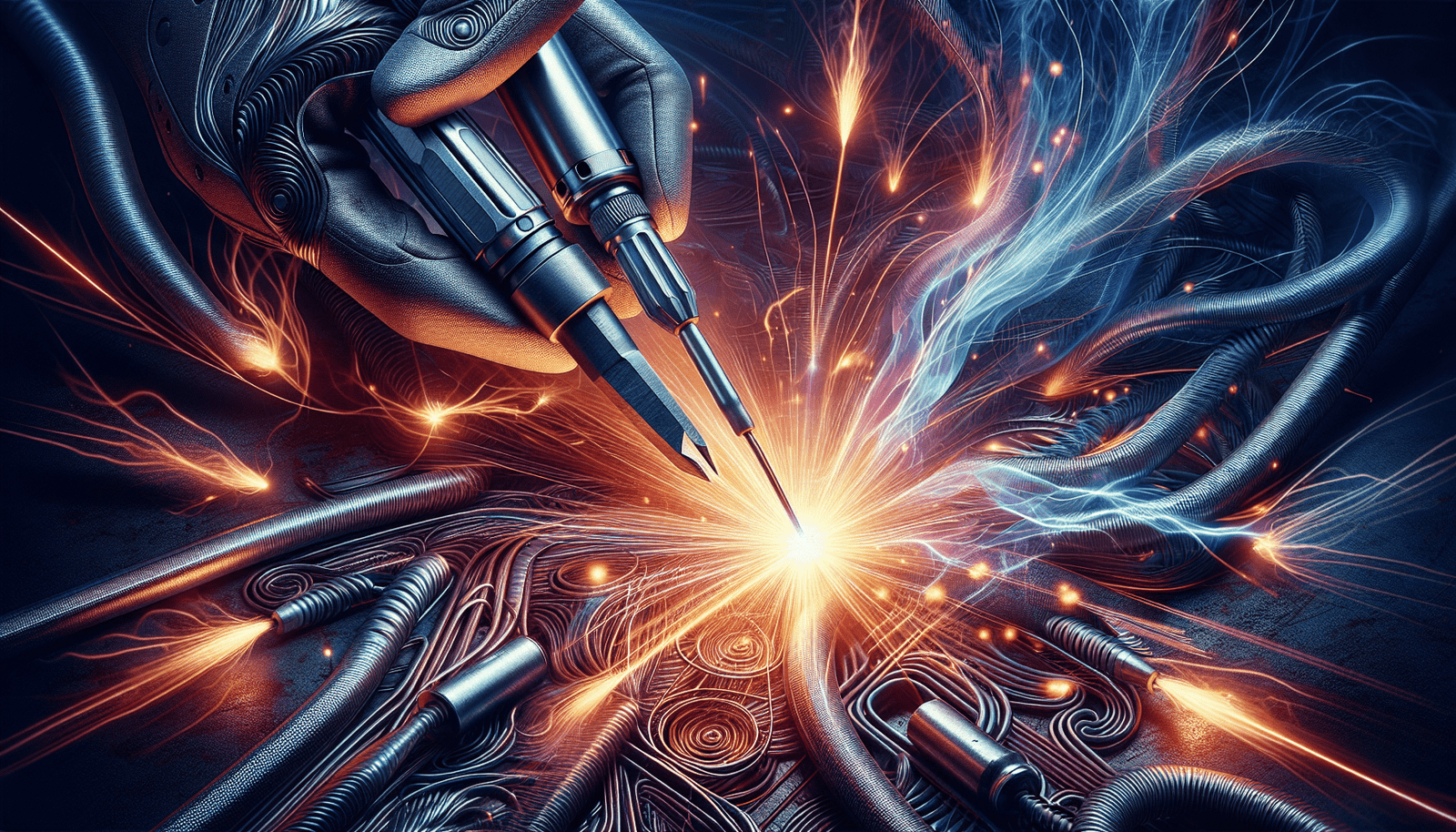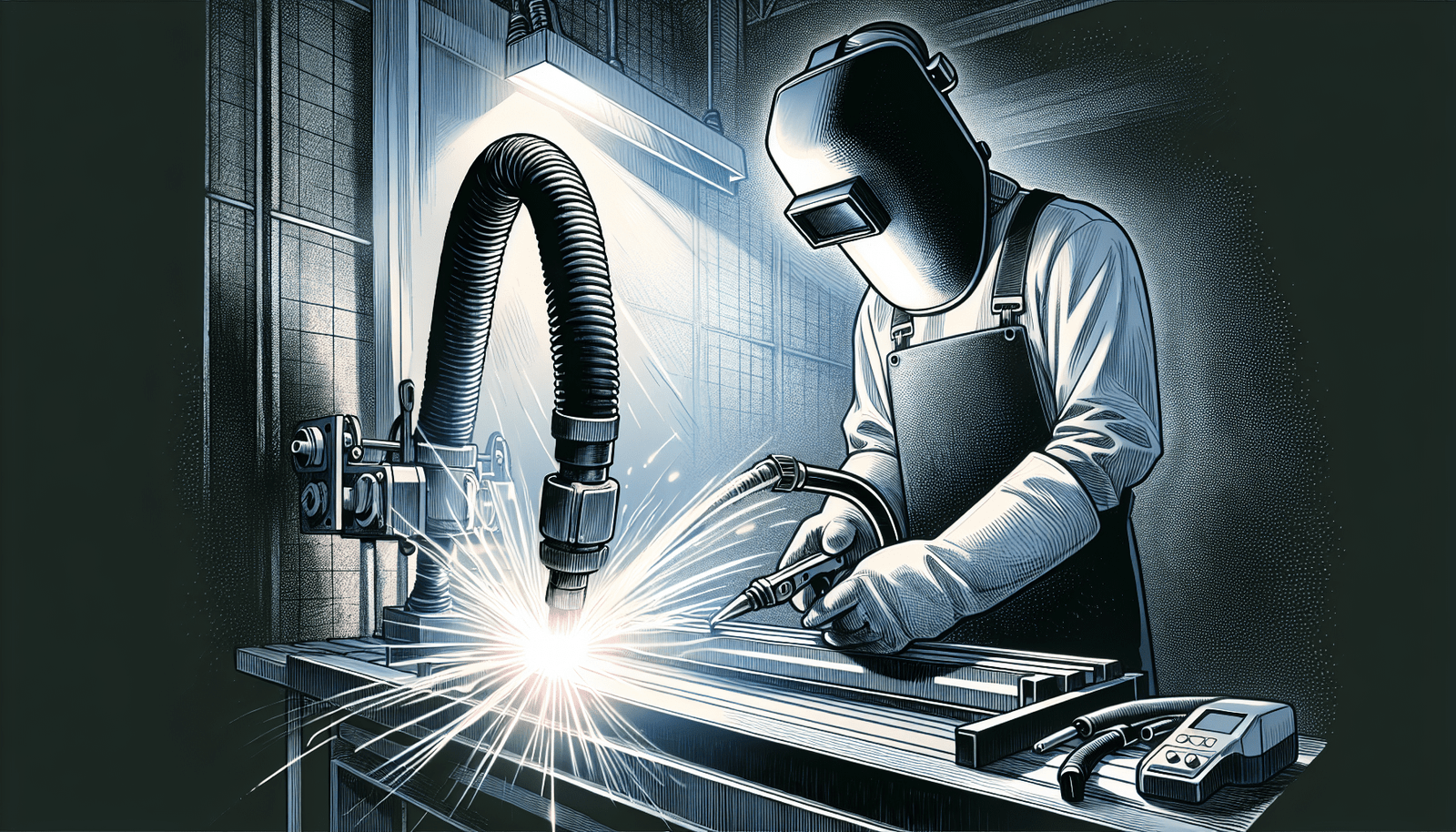Are you new to the world of welding? Are you wondering how to effectively use a welding magnet? Look no further! In this beginner’s guide, you will discover everything you need to know about using a welding magnet. From the basics of what a welding magnet is, to tips and techniques for getting the most out of this handy tool, we’ve got you covered. So, whether you’re a DIY enthusiast or aspiring welder, this guide will help you navigate through the world of welding magnets with ease and confidence. Get ready to dive into the fascinating world of welding and unleash your creativity!
Understanding Welding Magnets
Defining a welding magnet
A welding magnet, also known as a magnetic welding clamp or jig, is a specialized tool used in welding processes to hold metal pieces in place securely. These magnets are designed to create a strong magnetic field that can attract and hold ferromagnetic materials, allowing welders to position and align workpieces accurately during welding.
Components of a welding magnet
A typical welding magnet consists of three main components: a magnetic base, an adjustable arm, and a switch or lever mechanism. The magnetic base contains powerful magnets that generate a strong magnetic field. The adjustable arm allows the welder to position and hold the workpiece at various angles. The switch or lever mechanism is used to control the magnetic force and release the workpiece when welding is complete.
Working Principle of a Welding magnet
Welding magnets utilize the properties of magnetism to hold metal pieces together, enabling precise and efficient welding. When a welding magnet is brought close to a ferromagnetic material, such as iron or steel, the magnetic field generated by the magnet attracts and securely holds the workpiece in place. This ensures stability and allows the welder to focus on the welding process without worrying about the workpiece shifting or moving.
Importance of Welding Magnets
Efficiency in welding processes
Using welding magnets can greatly enhance the efficiency of welding processes. By securely holding the workpiece in the desired position, welders can easily access the joint and weld without the need for additional fixtures or clamps. This saves time and effort, especially when working with large or complex structures.
Safety Measures
Welding magnets play a crucial role in ensuring safety during welding. By holding the workpiece securely, they prevent accidental movement or displacement, reducing the risk of injury. Additionally, welding magnets can act as heat sinks, dissipating excess heat from the welding area and protecting adjacent materials from damage.
Accuracy and precision in welding
The use of welding magnets allows for increased accuracy and precision in welding. By firmly holding the workpiece in the desired position, welders can achieve consistent and precise welds, resulting in high-quality finished products. The magnets help maintain proper alignment and angles, ensuring welds are strong and structurally sound.
Types of Welding Magnets
Standard welding magnets
Standard welding magnets are the most common type and are available in various shapes and sizes. They are typically fixed in their magnetic force and angle, providing a reliable and stable holding force for a wide range of welding applications.
Adjustable welding magnets
Adjustable welding magnets offer flexibility in terms of angle and positioning. They feature an adjustable arm that allows welders to set the desired angle and hold the workpiece securely. These magnets are particularly useful when working on projects that require complex positioning or multiple welding angles.
Multipurpose welding magnets
Multipurpose welding magnets are designed to provide versatility in holding different types of workpieces. They often come with multiple magnetic surfaces or adjustable components that allow for holding various shapes and sizes of metal pieces. These magnets are ideal for welders who frequently work on diverse projects with different workpiece configurations.
Comparison of different types
When choosing a welding magnet, it is essential to consider the specific requirements of your welding projects. Standard welding magnets are suitable for most applications and offer a reliable holding force. Adjustable welding magnets provide added flexibility, while multipurpose magnets offer versatility for various workpiece shapes and sizes.
How to Operate a Welding Magnet
Safety measures before starting
Before using a welding magnet, it is crucial to ensure safety precautions are in place. Always wear appropriate protective gear, including safety glasses, gloves, and a welding helmet. Make sure the work area is clear of any flammable materials, and have a fire extinguisher on hand. Additionally, check the condition of the welding magnet and ensure it is in proper working order.
Setting up the welding magnet
To set up a welding magnet, first, clean the contact surfaces of the magnet and the workpiece to remove any dirt, debris, or rust that may affect the holding force. Place the magnet in the desired position on the workpiece and engage the magnetic force by adjusting the switch or lever mechanism. Confirm that the magnet securely holds the workpiece and make any necessary adjustments.
Using the welding magnet
Once the welding magnet is set up, proceed with the welding process. Position yourself comfortably, ensuring proper visibility and access to the joint. Use the magnet as a guide to maintain the desired angles and alignment while welding. Weld slowly and steadily, following the appropriate welding techniques and parameters for the type of joint and material being welded.
Best Practices while Using a Welding Magnet
Keeping the magnet clean
Regularly clean the surface of the welding magnet to remove any dust, debris, or spatter that may accumulate during welding. This ensures the magnet’s optimal performance and prevents any contaminants from interfering with the magnetic force. Use a clean, dry cloth or a mild solvent if necessary, taking care not to scratch or damage the magnet surface.
Proper positioning
When using a welding magnet, ensure that the workpiece is properly positioned to achieve the desired welding outcome. Take into account factors such as joint type, material thickness, and welding techniques. Proper positioning helps maintain the integrity of the joint and ensures the strongest possible welds.
Regular inspection of the welding magnet
Frequently inspect the welding magnet for any signs of damage, such as cracks, chips, or excessive wear. Replace any damaged or faulty components immediately to maintain the magnet’s functionality and safety. Regular inspection also allows for early detection of any issues that may affect the welding process or the integrity of the workpiece.
Troubleshooting Common Problems
Weak Magnetic Force
If the welding magnet exhibits a weak magnetic force, check for any contamination on the magnet surface. Clean the magnet and workpiece thoroughly, ensuring a clean and secure connection. If the issue persists, the magnet may need to be replaced or repaired by a professional.
Inconsistent Angles
Inconsistent angles may be caused by improper positioning or a misaligned magnet. Double-check the setup and ensure the magnet is securely holding the workpiece in the desired position. If necessary, make adjustments to the angle or alignment to achieve the desired welding outcome.
Dirty or Damaged Magnet Surface
If the magnet surface is dirty or damaged, it can affect the holding force. Clean the surface using a mild solvent and a clean cloth. Inspect for any cracks, chips, or signs of wear and replace damaged components as needed.
Maintaining and Cleaning Your Welding Magnet
Regular maintenance tips
To maintain your welding magnet’s performance and prolong its lifespan, follow these maintenance tips:
- Keep the magnet in a dry and clean environment when not in use to prevent rust or corrosion.
- Avoid exposing the magnet to extreme temperatures or direct sunlight.
- Lubricate any moving parts or adjustable components regularly to ensure smooth operation.
- Store the magnet in a secure place to prevent damage or accidental activation.
Cleaning processes
Clean the magnet regularly to remove any dirt, debris, or spatter. Use a clean, dry cloth to wipe the surface carefully. If necessary, use a mild solvent to remove stubborn contaminants. Avoid using abrasive materials or cleaners that may scratch or damage the magnet.
Replacement and repair
If your welding magnet becomes damaged or shows signs of wear that affect its functionality, it may be necessary to replace or repair specific components. Contact the manufacturer or a professional welding supplier for guidance on obtaining replacement parts or arranging for repairs.
Choosing the Right Welding Magnet
Determining your needs
When selecting a welding magnet, consider the specific requirements of your welding projects. Determine the maximum weight and size of the workpieces you will be welding, as well as the angles and positions needed. This will help you choose a magnet that can securely hold the workpieces and provide the necessary flexibility for your projects.
Assessing quality and durability
Quality and durability are essential factors when choosing a welding magnet. Look for magnets made from high-quality materials and components that can withstand the demands of welding processes. Read reviews and seek recommendations from experienced welders to ensure you select a reliable and long-lasting magnet.
Considering cost and reviews
While cost is an important factor, it should not be the sole determining factor when choosing a welding magnet. Consider the overall value, taking into account quality, durability, and features. Read reviews from other welders to gauge the performance and reliability of different magnet brands and models.
Innovations and Technological Advancements in Welding Magnets
Digital welding magnets
Digital welding magnets incorporate advanced technology to provide precise control over the magnetic force and angles. These magnets often feature digital displays and buttons that allow welders to easily adjust and monitor the magnet’s settings. Digital welding magnets offer enhanced accuracy and convenience in welding processes.
Remote-controlled magnets
Remote-controlled welding magnets enable welders to change the magnetic force and angles from a distance. These magnets come with a remote control device that allows for quick adjustments without having to physically interact with the magnet. This feature is particularly useful in applications where frequent angle changes are required.
New materials and designs
Advancements in materials and designs have led to the development of stronger and more efficient welding magnets. Magnets made from rare earth metals, such as neodymium, offer significantly higher holding forces compared to traditional magnet materials. Additionally, innovative designs provide increased flexibility and adaptability, making welding magnets more versatile and user-friendly.
Concluding Tips for Beginners
Prioritize safety
As a beginner in welding, safety should be your top priority. Always wear the appropriate protective gear, ensure proper ventilation in the work area, and follow all safety guidelines and procedures. Familiarize yourself with the safe operation of welding magnets and seek guidance from experienced welders or instructors.
Do not rush the learning process
Welding is a skill that requires practice and patience. Take the time to learn the proper welding techniques, understand the characteristics of different materials, and practice on scrap pieces before working on actual projects. Continuous learning and improvement are key to becoming a proficient welder.
Invest in high-quality equipment
While it may be tempting to opt for cheaper welding magnets as a beginner, investing in high-quality equipment will pay off in the long run. Quality welding magnets offer better performance, durability, and safety features, ensuring a smoother and more efficient welding experience. Consider the recommendations of experienced welders and invest in reputable brands known for their quality products.
In conclusion, welding magnets are valuable tools that provide efficiency, safety, and precision in welding processes. Understanding the different types, operating procedures, and maintenance requirements of welding magnets is essential for welders of all skill levels. By prioritizing safety, taking the time to learn and practice, and investing in quality equipment, beginners can improve their welding skills and achieve successful welding outcomes.




